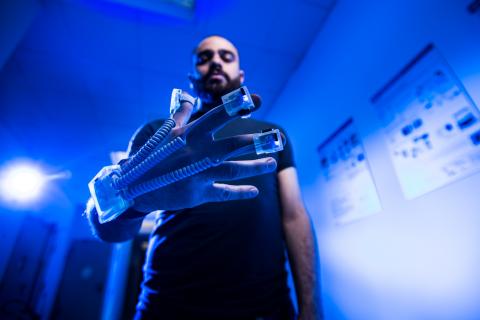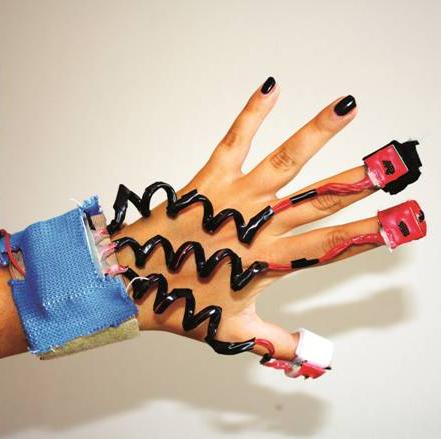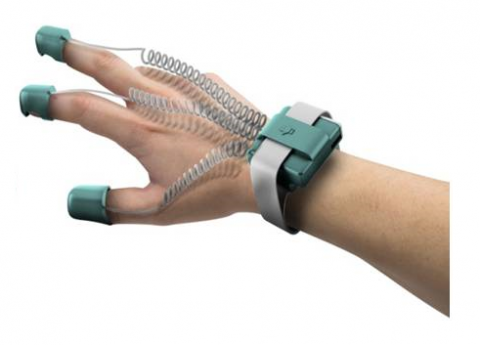Early diagnosis of PARKINSON’s disease: wearable sensors and artificial intelligence may predict the onset of disease faster than current diagnostic tools

Researchers of Sant’Anna School Biorobotics Institute have found that wearable sensors and artificial intelligence may predict the onset of Parkinson’s disease up to 7-year period in advance. The study “Upper limb motor pre-clinical assessment in Parkinson's disease using machine learning” was published in Parkinsonism & Related Disorders journal.
Under the supervision of Filippo Cavallo (Sant’Anna School) and neurologist Carlo Maremmani (AUSL Toscana Nord Ovest, Ospedale delle Apuane), the team of researchers developed the SensHand device to acquire motion data from the upper limbs during the performance of everyday tasks. Parkinson’s disease is a chronic progressive neurodegenerative disease, the second most common neurodegenerative disorder after Alzheimer’s disease, affecting 1% of population aged 65 and older. Symptoms of Parkinson's disease include tremor, impairments in motor function such as slowed movements, muscular rigidity and postural instability. Other symptoms include poor hand coordination, loss of smell (Hyposmia - reduced ability to smell and to detect odors, predicting the onset of Parkinson's disease within 5 years in advance) and neuropsychiatric problems. The diagnosis of Parkinson's disease typically occurs in advanced stage in which motor symptoms are evident and neurophysiological damage has already taken place.
This novel device developed at the Biorobotics Institute - “Biorobotics for Parkinson Disease Lab” can allow for earlier diagnosis, and earlier treatment.
“Although the Parkinson’s disease diagnosis is mainly based on motor symptoms – said Filippo Cavallo –non-motor symptoms such as hyposmia, often emerge earlier than motor symptoms and, in many cases, can help to detect Parkinson’s disease 5-7 years earlier than in the past”.
Data processed from the wearable device SensHand (90 individuals , 30 healthy persons, 30 patients suffering from hyposmia, 30 diagnosed with Parkinson’s disease), combined with olfactory testing, indicate that subtle changes in motor performance may predict the onset of Parkinson’s disease and achieve diagnosis much earlier than has been possible up until the present.
“Our approach – added Filippo Cavallo – by which 96 parameters (48 parameters per side) were computed by spatiotemporal and frequency data analysis assesses changes among the different groups classification. The results to detect patients from healthy persons were excellent (accuracy values reached 95%) and confirmed the potential of device SensHand to detect the disease. In addition, tests on patients suffering from hyposmia as persons at risk for Parkinson’s disease have also shown promising results. The device detected differences between the different groups comparing the sensor output with 79 percent accuracy”.
This study received financial contribution through the Regione Toscana-funded DAPHNE project under the FAS Salute 2007-2013 program. It focused on the combination mHealth applications and ICTs.
“Our cooperative work experience, by combining motion analysis with a validated olfactory screening test, can help clinicians to identify subtle changes in motor performance that characterized Parkinson’s disease onset – said Carlo Maremmani. Diagnosing Parkinson's at the earliest stages could help patients begin neuroprotective therapy sooner and before extensive loss. Advances in pre-clinical recognition of early symptoms will then translate into clinical trials and early treatment that can slow disease progression and neurodegeneration”.
“Novel machine learning algorithms can enable mining of data acquired by wearable sensors, providing a useful tool for supporting clinicians in diagnosis – said Erika Rovini, postdoctoral researcher at the Biorobotics Institute. Thanks to their accuracy, unobtrusiveness, low cost, and ease of use, wearable sensors can represent an interesting solution for objective and quantitative evaluation of the motor performance and a valuable tool to support decision making activity”.
Click here to download the paper “Upper limb motor pre-clinical assessment in Parkinson's disease using machine learning” by F. Cavallo, A. Moschetti, D. Esposito, C. Maremmani, & E. Rovini (2019), in Parkinsonism & Related Disorders.






